Comet C/2011 L4 PANSTARRS
There's been a lot of hype surrounding comet PANSTARRS. While it will be visible with the naked eye in the early twilight hours it will not as spectacular as Hale-Bopp, Hyakutake or McNaught. That shouldn't stop you from going out for a look, just don't be surprised when it's not a jaw dropping sight. A pair of binoculars will be useful for locating it in the evening twilight. However, you'll need to be careful as it will be fairly close to the sun before March 12th. It's been predicted to hang out around magnitude 2 or so which is about the same brightness as the stars in the Big Dipper or Orion's belt. If it were above the horizon longer after sunset this would probably be a good sight for most people, however the glare of twilight will wash it out substantially.
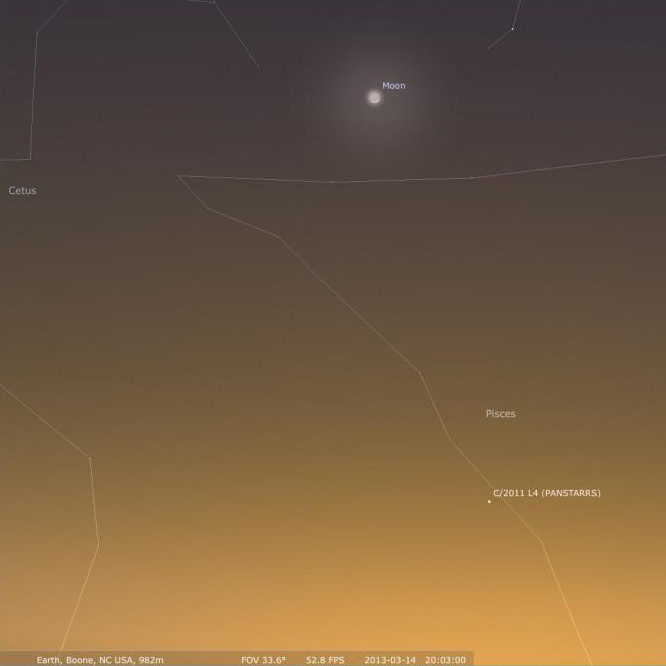 PANSTARRS on March 14th from a middle northern latitude.
PANSTARRS on March 14th from a middle northern latitude.
From about March 12th to 14th PANSTARRS will have a nice pairing with the thing waxing crescent moon. This will make it easier to find and create an good photo op. A normal to semi-telephoto lens will be useful, something in the 85mm + range I'd guess, for trying to capture PANSTARRS. Don't be afraid of a higher ISO either. Second magnitude isn't terribly bright and ISO 1600+ will let you take a short enough exposure that the Earth's rotation shouldn't blur things up too badly. You'll also need a very clear view of the western horizon. At most comet PANSTARRS will only get around 10º above the horizon. That's only about a fist width held out at arms length. Below are a series of screen captures from Stellarium showing the comet's progression over the next few days. You can click to enlarge.
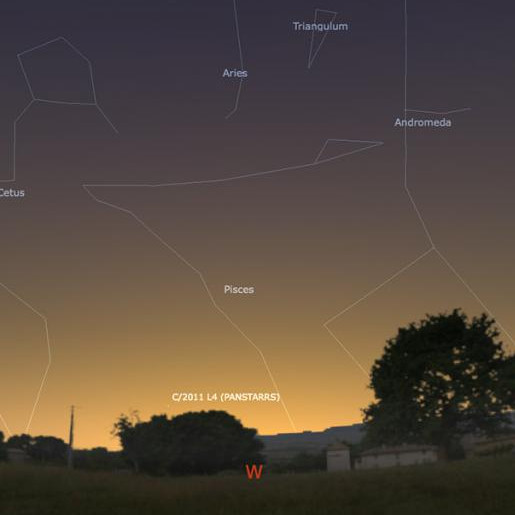 Looking west on March 10th 2013 at about 7:55 PM EDT (6:55 PM EST). Not very high in the sky and hard to spot.
Looking west on March 10th 2013 at about 7:55 PM EDT (6:55 PM EST). Not very high in the sky and hard to spot.
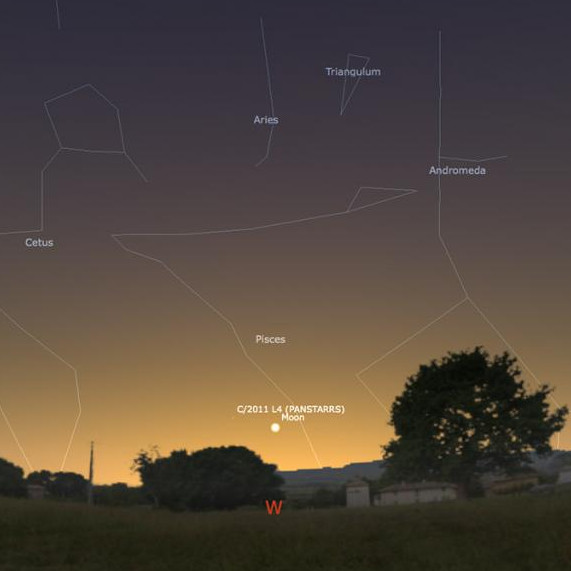 Looking west on March 12th 2013 at about 7:55 PM EDT (6:55 PM EST). A little better, still not great.
Looking west on March 12th 2013 at about 7:55 PM EDT (6:55 PM EST). A little better, still not great.
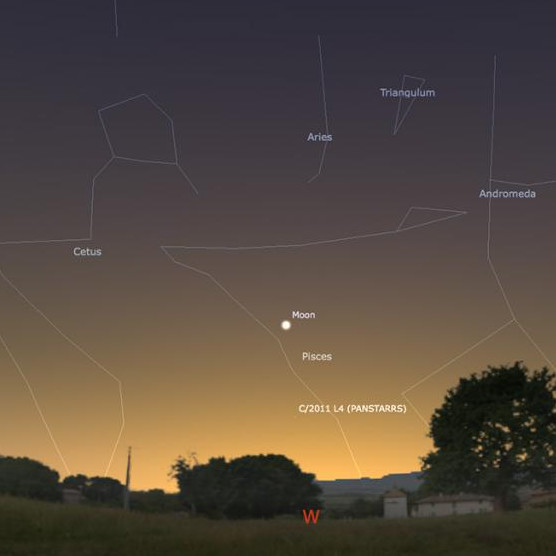 Looking west on March 13th 2013 at about 7:55 PM EDT (6:55 PM EST). One of the best nights.
Looking west on March 13th 2013 at about 7:55 PM EDT (6:55 PM EST). One of the best nights.
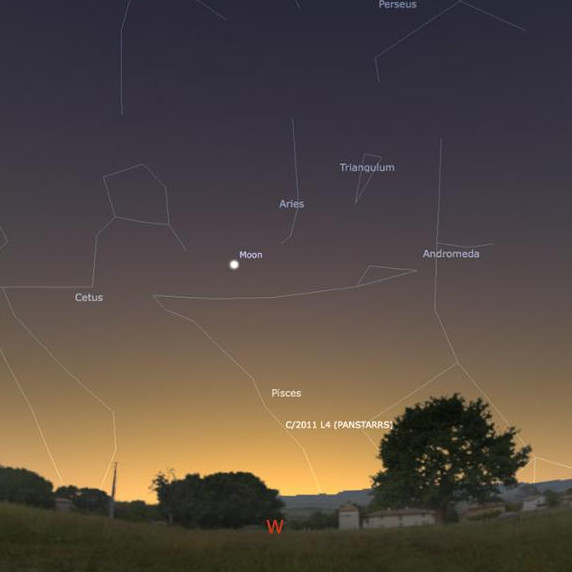 Looking west on March 14th 2013 at about 7:55 PM EDT (6:55 PM EST). Probably the second best night to catch PANSTARRS.
Looking west on March 14th 2013 at about 7:55 PM EDT (6:55 PM EST). Probably the second best night to catch PANSTARRS.
Again, I wouldn't let any of this stop you from going out and checking it out. Naked eye comets are rare and even small ones are fun to see. Consider it practice for comet ISON later this year. If it holds up to the hype it should be nothing short of spectacular. However, comets are very hard to predict so at this point ISON could do anything between now and December.